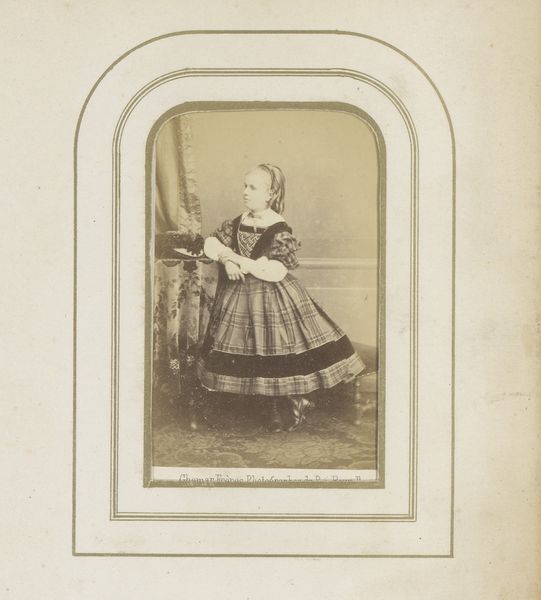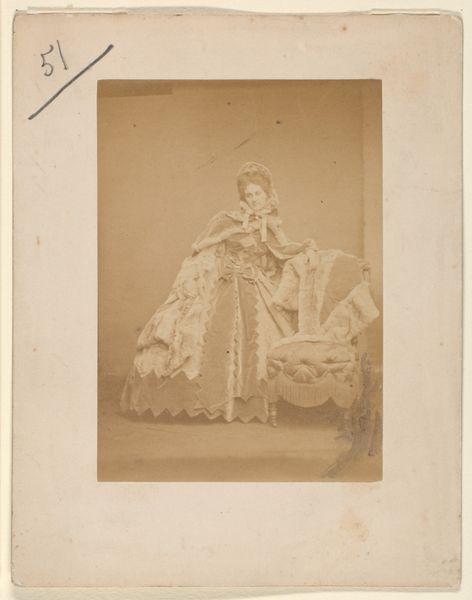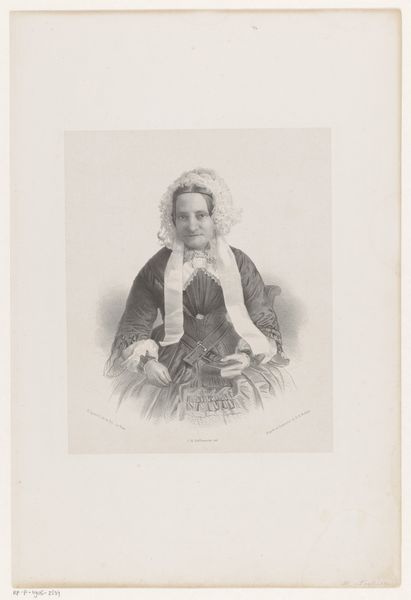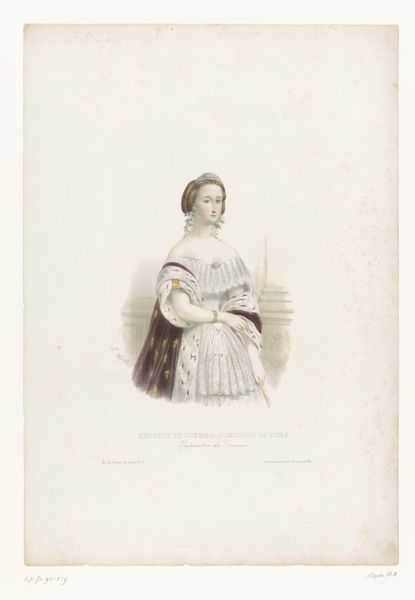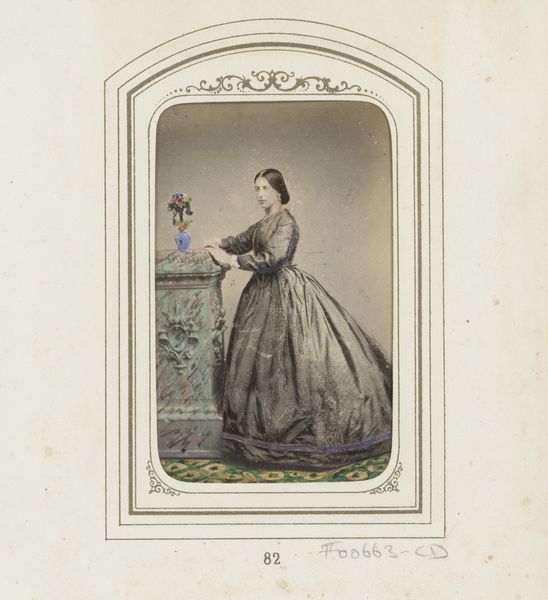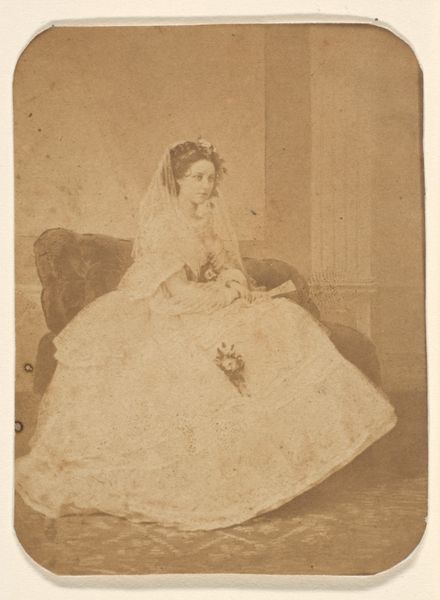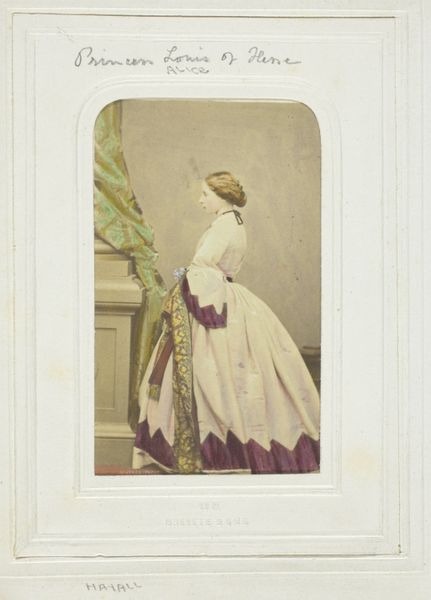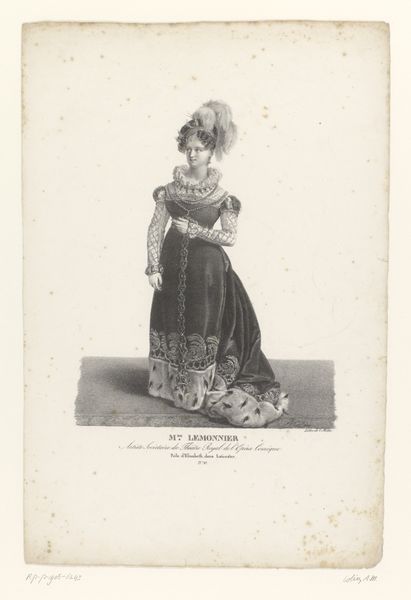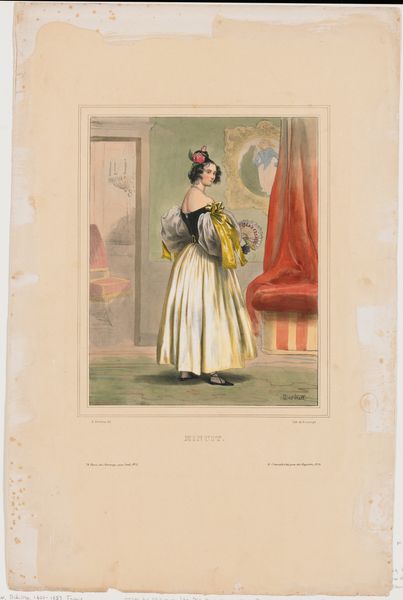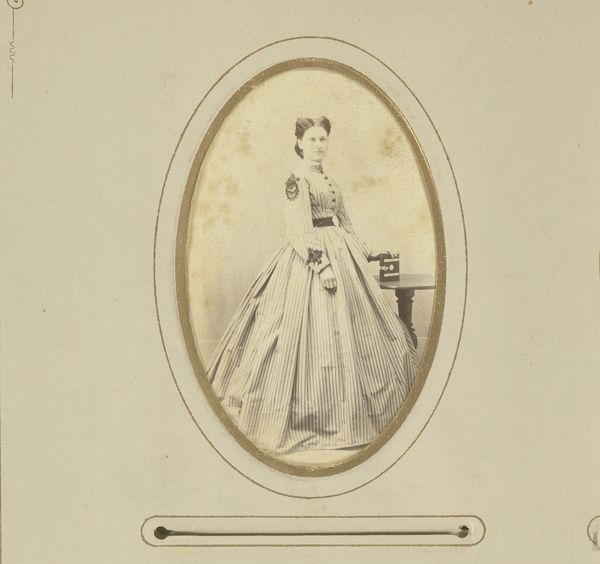
Dimensions: 9.1 × 5.8 cm (image/paper); 10.6 × 6.1 cm (mount)
Copyright: Public Domain
Curator: Standing before us is "H.R.H. The Princess Louisa," a hand-colored photograph dating back to 1861. It's the work of John Jabez Edwin Mayall, and resides here at the Art Institute of Chicago. What strikes you immediately? Editor: It has this sort of staged theatrical feel, with the drawn curtain and the almost cartoonish zigzag trim of her skirt. Her expression is somewhere between shy and knowing, isn’t it? A bit of playful defiance, maybe. Curator: The Romantic style certainly plays a part. Mayall was known for his portraits of royalty and celebrities, and understanding the conventions of representing power at that time helps us decode this image. Consider how photographic portraits were shaping public perceptions. Editor: Right, the public image became such a crafted thing. I see a young woman presented, yet perhaps constrained, by the trappings of royalty. The very act of coloring the photograph speaks to the effort to construct reality in a specific way. Who decided this needed to be 'real' by being in colour? What does that say? Curator: That intersection of reality and constructed image is key. Also, the fact that she's posed indoors with domestic trappings like flowers, which presents an idea of Victorian femininity at a pivotal point. It also reminds me of similar strategies deployed for female monarchs of that period and its social conventions. Editor: Absolutely. I can't help but see it in the light of feminist perspectives. How was this woman maneuvering power within the rigid confines of Victorian society? Is the slight hint of rebelliousness in her eyes something real, or just my own projection? Curator: A productive ambiguity to consider as part of a deeper story on Victorian culture and gender roles at court. The circulation of these images served very specific ends. They solidify the Victorian era while reinforcing strictures regarding class and behavior. Editor: It is remarkable how one photograph could serve to highlight those complexities. It is almost asking more questions that I feel like it answers. Curator: That is exactly what makes art an endless study in history and social politics. It is why we continue to bring our modern perspectives and create new ways to discuss it today.
Comments
No comments
Be the first to comment and join the conversation on the ultimate creative platform.

